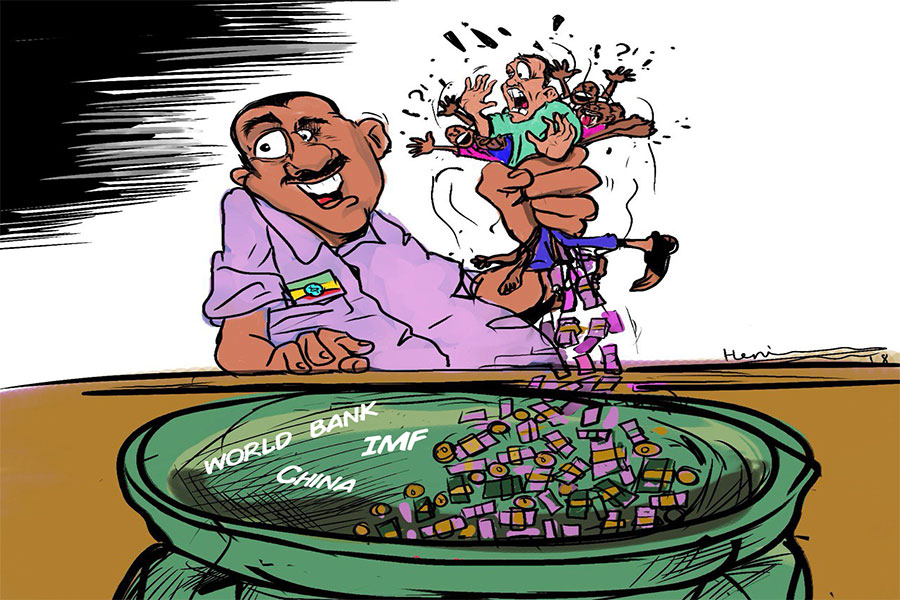
Photo Gallery | 180286 Views | May 06,2019
Oct 18 , 2025. By Kidist Yidnekachew ( Kidist Yidnekachew is interested in art, human nature and behaviour. She has studied psychology, journalism and communications and can be reached at (kaymina21@gmail.com) )
Digital payments are expanding rapidly, promising convenience, speed, and inclusion. Yet for everyday shoppers, that promise often feels out of reach. A routine 400 Br supermarket purchase turned into a frustrating ordeal: QR codes froze, apps stalled, and cross-platform transfers were rejected, exposing a patchwork system riddled with inconsistencies. Merchants enforce rigid policies to mitigate fraud and operational risk, but the cost of this caution falls squarely on consumers, eroding trust and testing patience. Until banks, mobile wallets, and retailers harmonize their platforms, cashless convenience will remain aspirational, leaving customers to navigate a maze of glitches, rules, and unnecessary friction, and reminding us that technology without interoperability cannot deliver the seamless experience the digital economy promises.
It’s strange how something as ordinary as paying for groceries can spark a lesson in how fractured Ethiopia’s digital payment system remains. The other day, I found myself caught in a minor but maddening dispute at a local supermarket, not over price or product quality, but over how I chose to pay.
Like many city dwellers, I’ve grown accustomed to life without cash. Digital payments have become a part of my daily routine, from coffee runs to taxi rides. The world, after all, is moving fast toward cashless convenience, or so we are told. Yet, the reality on the ground tells a different story. Some merchants embrace the shift with flashy QR codes and online promos, while others cling to the comfort of paper bills and handwritten receipts.
That morning, I grabbed a few household items and joined the checkout queue. A poster near the till flaunted a bank’s QR code, advertising an enticing promotion: pay through their system for a chance to win prizes, even a house. Who wouldn’t want to try their luck? Confidently, I opened my banking app to scan the code. The app froze. Then the code refused to load. It was one of those moments when technology seems to take pleasure in your impatience.
Determined not to give up, I moved the money from my bank account to my Telebirr wallet, thinking it would make the process smoother. Instead, that’s when the ordeal began.
The cashier, polite but firm, told me I couldn’t use that method. Since the money originated from Telebirr, it had to go directly into the store’s Telebirr account. The rule, he explained, was non-negotiable. Cross-platform payments, bank to wallet or wallet to bank, were strictly off-limits.
I couldn’t believe it. Money is money. As long as the right amount lands in the merchant’s account and the transaction is legitimate, why should the source matter? My frustration boiled over. I tried explaining that it made no financial sense to reject a payment simply because it came from another platform, but the cashier, caught between policy and reason, only shrugged.
After several tense minutes and an audience of impatient shoppers forming behind me, the attendant eventually relented. I paid using Telebirr, abandoning the dream of winning that house. Still, I walked out fuming. For a moment, I even considered returning the items out of sheer principle.
Later, after cooling down, I realised my anger was misplaced. The cashier was not the villain here; he was merely a foot soldier enforcing an ill-conceived rule. The real issue lies with the system—a rigid, confusing framework that punishes customers for daring to navigate the country’s fractured digital landscape.
Ethiopia’s payment systems, though expanding rapidly, are still worlds apart from the seamless experience people expect. Interoperability between banks and mobile money platforms remains patchy, often plagued by delays, technical glitches, and missing funds. It’s no wonder that many traders hesitate to accept cross-platform payments. The fear of bounced transactions and fraud is real, especially when businesses operate on thin margins.
But what’s overlooked is the long-term cost of such rigidity. When merchants prioritise internal convenience over customer experience, they erode the very loyalty that keeps them in business. A 400 Br sale might seem trivial to a supermarket chain, but for the average shopper, it represents a conscious choice of where to spend. And choices, once soured, are rarely repeated.
The digital economy isn’t just about innovation; it’s about trust. Technology must serve people, not trap them in a maze of incompatible systems and arbitrary rules. Interoperability shouldn’t be treated as a luxury or a marketing slogan; it’s the foundation of a functional digital marketplace.
If the goal is to modernise commerce and promote financial inclusion, businesses and banks alike must remember a basic truth: convenience drives adoption. No one wants to wrestle with QR codes or platform restrictions while buying bread and sugar.
At the end of the day, payment should be the simplest part of a transaction, not the battleground. Once the money is real and traceable, it should not matter whether it travels through a bank, a wallet, or a QR code. The sooner merchants realise this, the sooner Ethiopia’s digital economy can grow into what it promises to be, a system that rewards efficiency, not endurance.
PUBLISHED ON
Oct 18,2025 [ VOL
26 , NO
1329]

Photo Gallery | 180286 Views | May 06,2019

Photo Gallery | 170483 Views | Apr 26,2019

Photo Gallery | 161513 Views | Oct 06,2021

My Opinion | 137269 Views | Aug 14,2021

Nov 1 , 2025
The National Bank of Ethiopia (NBE) issued a statement two weeks ago that appeared to...

Oct 25 , 2025
The regulatory machinery is on overdrive. In only two years, no fewer than 35 new pro...

Oct 18 , 2025
The political establishment, notably the ruling party and its top brass, has become p...

Oct 11 , 2025
Ladislas Farago, a roving Associated Press (AP) correspondent, arrived in Ethiopia in...